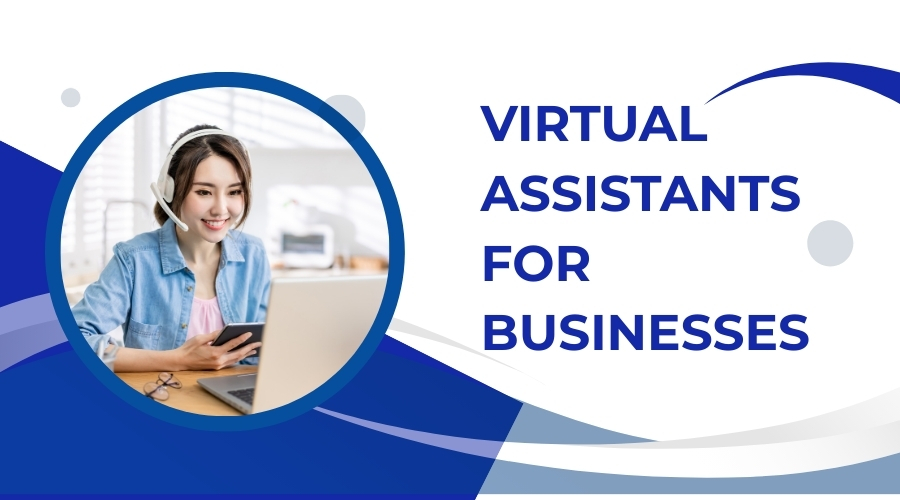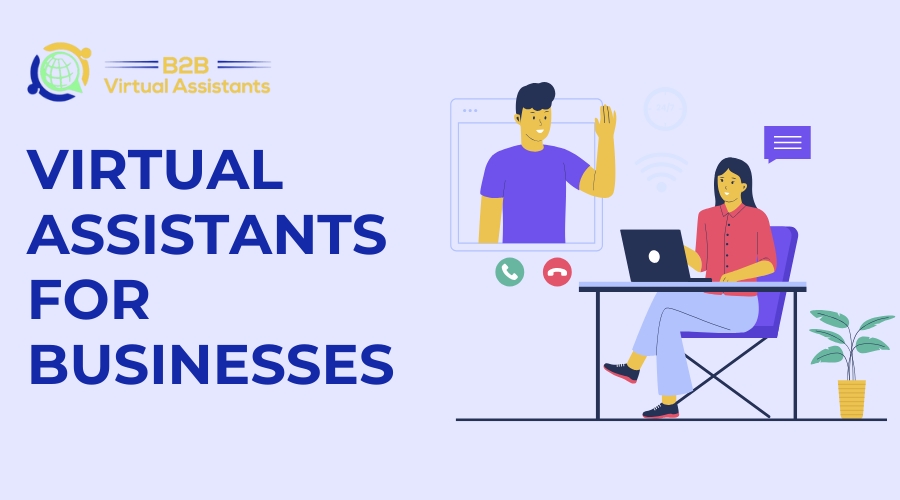In today’s fast-paced digital world, entrepreneurs and businesses are turning to virtual assistant services to save time, cut costs, and increase efficiency. Whether it’s managing emails, scheduling meetings, customer support, or handling social media, virtual assistants (VAs) can be game-changers. But hiring the wrong virtual assistant or managing the process poorly can lead to stress, wasted money, and missed opportunities.
To help you make the most of virtual support, we at B2B VIRTUAL ASSISTANTS have put together this comprehensive guide highlighting the 8 most common mistakes businesses make when hiring virtual assistant services — and how to avoid them.
1. Not Defining Your Business Needs Clearly
One of the most common mistakes businesses make when hiring virtual assistant services is not clearly defining their needs from the outset. Without a precise understanding of the tasks and responsibilities you want to delegate, it’s challenging to find a VA who is well-suited to your requirements. Start by identifying the specific tasks you want the VA to handle. Are they general administrative duties, customer service tasks, or specialized projects?
Once you have a list of tasks, prioritize them based on importance and frequency. This will give you a clearer picture of what you need and help you communicate these needs effectively to potential VAs. Consider creating detailed job descriptions that outline the skills and experience required for each task. This not only helps in finding the right candidate but also sets clear expectations from the beginning.
Another critical aspect is understanding your own workflow and how a VA can fit into it. Are there particular software or tools your team uses that the VA should be familiar with? Will the VA need to interact with other team members regularly, or will they work independently? Addressing these questions can help you find someone who can integrate smoothly into your operations.
Finally, think about the long-term goals of your business and how a VA can contribute to achieving them. Whether it’s freeing up your time to focus on strategic initiatives or ensuring routine tasks are handled efficiently, having a clear vision of what you want to achieve will guide you in selecting the right virtual assistant services.
By taking the time to define your business needs clearly, you can avoid misunderstandings and set the foundation for a successful working relationship.
2. Overlooking Communication Skills
Effective communication is essential when working with virtual assistant services. One common oversight is assuming that all VAs possess strong communication skills. However, this can vary greatly depending on their background and experience. It’s crucial to assess a VA’s communication abilities during the hiring process to ensure they can meet your needs.
Start by evaluating their proficiency in your primary language, as language barriers can lead to misunderstandings and errors. Conduct interviews and ask for written samples to gauge their command of language and ability to articulate thoughts clearly. Pay attention to how promptly and clearly they respond to your emails or messages during the initial interactions, as this can be indicative of their future communication style.
Additionally, it’s important to consider the tools and platforms your team uses for communication. Whether it’s email, project management software, or instant messaging apps, make sure the VA is comfortable and proficient with these tools. If your team frequently holds video meetings, ensure the VA is equipped with the necessary technology and is comfortable participating in such discussions.
Setting expectations for communication from the start can prevent many issues down the line. Clearly outline how often you expect updates, the preferred methods of communication, and the level of detail you require in status reports. This ensures that both you and the VA are on the same page and can collaborate effectively.
Another key aspect is cultural understanding, especially if your VA is from a different country. Be mindful of cultural differences that could affect communication styles and work to bridge any gaps. Open, honest, and frequent communication is the cornerstone of a successful partnership with your virtual assistant.
3. Failing to Vet Virtual Assistants Properly
Failing to thoroughly vet virtual assistants can lead to mismatched expectations and subpar performance. It’s not enough to simply skim through resumes or rely on a quick interview. Take the time to check references, review portfolios, and verify past experience. Speak with previous employers to get a sense of the VA’s reliability, work ethic, and ability to meet deadlines.
In addition to checking professional references, consider conducting skills assessments tailored to the tasks you’ll be delegating. This will give you a clearer picture of the VA’s actual capabilities and ensure they have the necessary technical proficiency. Don’t hesitate to ask for case studies or examples of previous work relevant to your industry.
Pay attention to the VA’s problem-solving skills and ability to work independently. Ask situational questions during the interview to gauge how they handle challenges and make decisions. This is particularly important for tasks that require a high level of autonomy.
It’s also worthwhile to assess cultural fit. Even though the VA will be working remotely, aligning values and work styles can greatly impact the effectiveness of your collaboration. A VA who understands and shares your business’s ethos is more likely to be motivated and committed to your projects.
Lastly, verify the VA’s availability and commitment level. Some VAs juggle multiple clients, which can affect their responsiveness and prioritization of your tasks. Make sure their workload allows them to dedicate the time and attention your projects require.
By investing the effort upfront to vet potential virtual assistants thoroughly, you set the foundation for a productive and long-lasting working relationship.
4. Expecting One VA to Do Everything
Expecting one virtual assistant to handle all aspects of your business is a common yet problematic expectation. Each VA comes with their own set of strengths and specializations, and assuming they can cover a wide range of tasks can lead to disappointment and inefficiency. It’s important to recognize that just like any other professional, VAs have areas of expertise. Some may excel at administrative work while others might be better suited for technical tasks or customer service.
To get the best results, consider breaking down the various roles you need support with and hiring multiple VAs with specialized skills to handle them. For example, you might have one VA managing customer service inquiries while another focuses on social media management or data entry. This approach ensures that each task is handled by someone who is highly skilled in that area, leading to higher quality work and better overall productivity.
Another key aspect is setting realistic expectations and workload limits for each VA. Overloading one assistant with too many tasks can lead to burnout and reduced performance. Regularly review the tasks assigned and make adjustments as needed to keep the workload manageable. This helps maintain high standards of work and keeps your VAs motivated and efficient.
Remember, the goal is to enhance productivity, not to overwhelm your assistant. A clear understanding of each VA’s capabilities and limitations will help you distribute tasks more effectively and create a more harmonious working relationship. This ensures that all aspects of your business receive the attention and expertise they deserve, ultimately contributing to your overall success.
5. Ignoring Time Zone Differences and Availability
One of the critical factors to consider when hiring virtual assistant services is time zone differences and availability. Overlooking these aspects can lead to communication delays, missed deadlines, and overall project mismanagement. It’s essential to understand the working hours of your virtual assistant and ensure they align with your business needs. If your VA is in a different time zone, this could affect how quickly they can respond to urgent tasks or participate in real-time meetings.
To mitigate potential issues, discuss availability and preferred working hours during the hiring process. Clarify whether the VA is willing to adjust their schedule to match your business hours, especially if timely communication is crucial for your operations. Additionally, use tools like shared calendars to keep track of time differences and plan meetings at mutually convenient times.
Another important consideration is the VA’s workload and other commitments. Some virtual assistants manage multiple clients, which can affect their availability for your projects. Make sure to discuss their current workload and confirm they have the capacity to meet your deadlines and be responsive when needed. Establishing a clear understanding of their availability upfront can help avoid conflicts and ensure smoother collaboration.
Leveraging project management and communication tools can also help bridge the time zone gap. Tools like Slack, Asana, or Trello can facilitate ongoing communication and task management, even when team members are not online simultaneously. By addressing time zone differences and availability early in the process, you can create a more effective working relationship with your virtual assistant and ensure that your business runs smoothly.
6. Skipping Proper Onboarding and Training
Skipping proper onboarding and training is a mistake that can jeopardize the success of your partnership with a virtual assistant. Proper onboarding ensures that your VA understands your business’s goals, workflows, and expectations from the start. Without this initial guidance, even the most skilled VA may struggle to perform tasks effectively, leading to misunderstandings and inefficiencies.
Start by preparing a comprehensive onboarding plan that includes all necessary information about your business processes, tools, and key contacts. Provide detailed instructions on the tasks they will handle, along with any specific guidelines or standards your company follows. It’s also beneficial to create a welcome packet that includes important documents, access to software tools, and any other resources they might need.
Training is another critical component that should not be overlooked. Even if a VA comes with extensive experience, there will be unique aspects of your business that require specific training. Schedule regular training sessions to cover these areas and ensure your VA feels confident in their role. Use a mix of written guides, video tutorials, and live sessions to cater to different learning styles and reinforce the information.
Regular check-ins during the initial phase are crucial. These meetings provide an opportunity to address any questions or concerns your VA may have and to give feedback on their performance. Open communication during this period helps build a strong working relationship and allows you to make any necessary adjustments early on.
Investing time in proper onboarding and training sets the stage for a productive and efficient working relationship, ensuring that your virtual assistant is well-equipped to contribute to your business’s success.
7. Not Setting Clear KPIs and Performance Metrics
Setting clear KPIs and performance metrics is essential to monitor the effectiveness of your virtual assistant services. Without these benchmarks, it becomes difficult to measure progress, identify areas for improvement, and ensure your VA is meeting your business objectives. Start by identifying key tasks and responsibilities that are critical to your operations. Then, establish specific, measurable goals for each of these tasks. For example, if your VA is handling customer service, you might set a target for response times or customer satisfaction ratings.
Regularly review these metrics to gauge performance. Use tools like dashboards and reports to keep track of KPIs and provide your VA with ongoing feedback. This not only helps in maintaining accountability but also allows for timely adjustments to workflows or strategies if needed. It’s also beneficial to set both short-term and long-term goals. Short-term metrics can help you assess immediate performance, while long-term KPIs can track overall contributions to your business growth.
Communication is key when setting these metrics. Make sure your VA understands the importance of each KPI and how their performance will be evaluated. Regular check-ins can help clarify expectations and provide an opportunity for your VA to ask questions or express concerns. Clear KPIs and performance metrics ensure that your virtual assistant remains aligned with your business goals and can effectively contribute to your success.
8. Choosing the Cheapest Option Without Considering Value
Opting for the cheapest virtual assistant services might seem like a good way to save money, but it often leads to greater costs in the long run. Inadequate skills, poor communication, and a lack of reliability can hinder your business operations and create additional work. It’s important to consider the overall value that a VA brings to your team, rather than just the initial price tag. Evaluate their experience, skill set, and ability to meet your specific business needs. Quality VAs may charge higher rates, but their efficiency and expertise can lead to better outcomes, making them a more cost-effective choice over time. Investing in a capable virtual assistant ensures that tasks are completed correctly and efficiently, which ultimately benefits your business’s growth and success.
Conclusion
Outsourcing with virtual assistant services can transform your business — but only if done right. Avoid these 8 common mistakes, and you’ll not only save time and money but also set up a reliable, long-term partnership that supports your business growth.
At B2B VIRTUAL ASSISTANTS, we take the guesswork out of hiring. From expert onboarding and team support to time zone flexibility and performance tracking — we provide everything you need to delegate with confidence.







